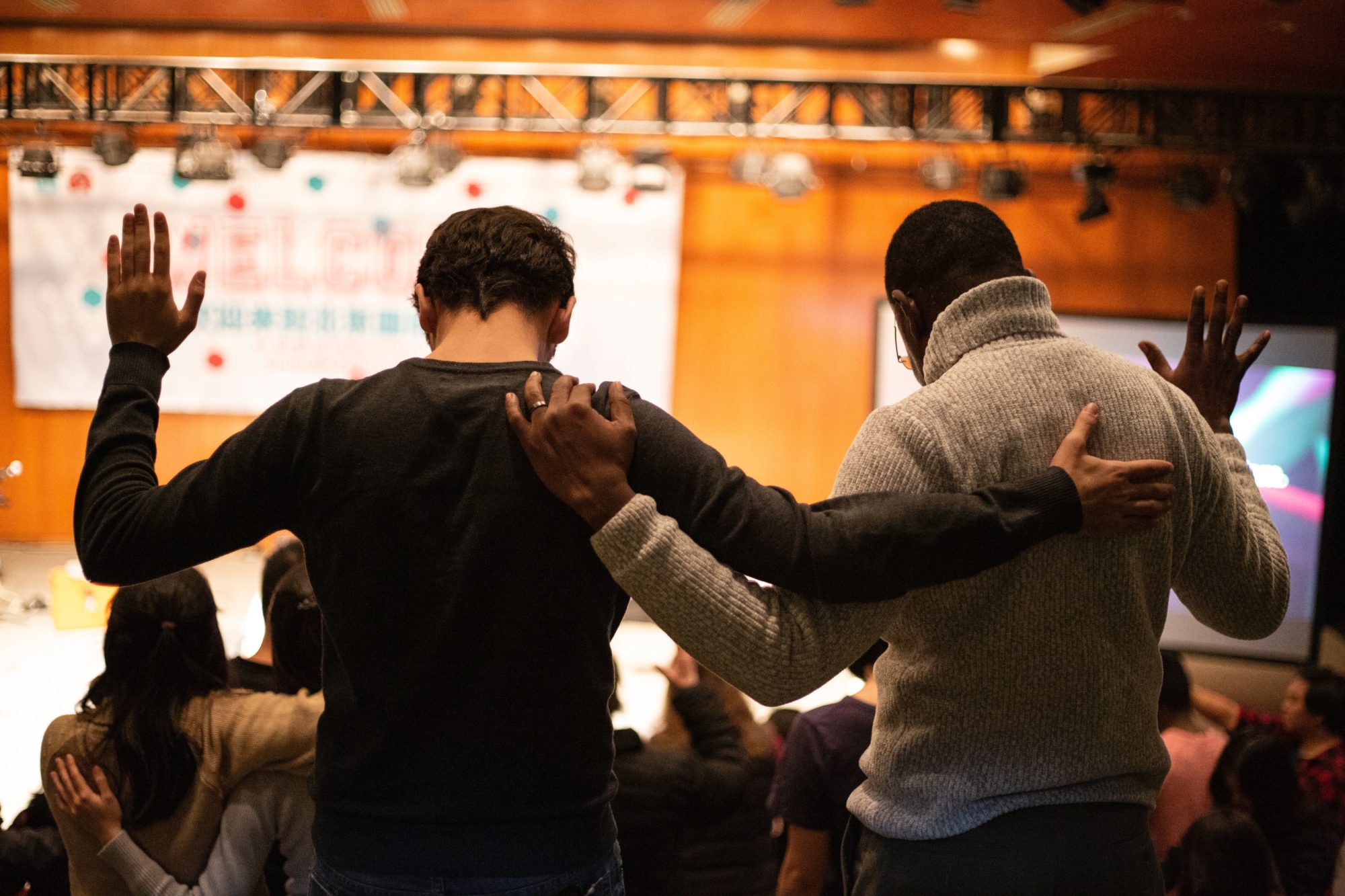Seven Marks of a True House of Prayer. Is This Your Church?
Few would argue Jesus’ declared intention that “His house” (today the assembled church and our physical bodies as His living temples) should be a house of prayer (Mark 11:17; 1 Corinthians 3:16, 6:19). However, the romance of extraordinary prayer can fade quickly in light of the reality of what it takes to get there for many individuals and churches.
The romance of extraordinary prayer can fade quickly in light of the reality of what it takes to get there for many individuals and churches.
I know pastors who publicly declare that their congregation is a “house of prayer”, which too often amounts to little more than receiving and distributing prayer requests. Others consider their occasional prayer events as tantamount to being a real house of prayer. If we dilute the New Testament model and spiritual essence of the “house of prayer” Jesus had in mind, we have missed the goal and sadly lulled ourselves into a substandard experience of His presence and power.
If we dilute the New Testament model and spiritual essence of the “house of prayer” Jesus had in mind, we have missed the goal and sadly lulled ourselves into a substandard experience of His presence and power.
The Original Intent
The Old Testament temple was built as a dwelling place of God’s holy presence and a center of sacred worship, prayer, and sacrifice. In reviewing Solomon’s original dedicatory moments for the temple (2 Chronicles 6:12-42), I’ve been impressed with the frequent mentions of prayer. After Solomon’s prayer, the glory of the Lord filled the temple. The people fell to their faces in awe-inspired worship. The Lord reminded them that this temple would exist as the focal point at which His people would humble themselves and pray, and seek His face – turning from their wicked ways for healing and restoration (2 Chronicles 7:14).
But what does this spiritual reality look like for your church and mine today? What does Jesus desire of us each week if we are to be an authentic house of prayer? I think the model of His own disciples gives us great insight as to what Jesus meant, since they were present when He made this declaration and had been personally taught and mentored by the Lord. Their priorities and approach provide a standard every leader and believer should consider. Here are seven salient observations from the model of the church from the book of Acts.
Seven Biblical Indicators of a True House of Prayer
1. Prayer was the priority over all self-centered activities –Jesus’ anger over the temple money changers was rooted in the self-serving system created by the religious leaders in order to use the funds from the sales of sacrificial animals for their own gain. He called it a “den of thieves.” A real house of prayer is a place of humility, sacrifice, and spiritual pursuit, not religious enterprise that exists for the reputational, financial, or egotistical advancement of the church, the leaders, or even the denomination. The Holy Spirit is the Spirit of prayer and He has one objective – to glorify Christ (John 16:14), not people, man-made enterprises, or evangelical strategies.
The Holy Spirit is the Spirit of prayer and He has one objective – to glorify Christ (John 16:14), not people, man-made enterprises, or evangelical strategies.
2. Prayer was the birthplace of all vision and ministry – Based on Christ’s instruction, the church was birthed from the womb of a 10-day corporate prayer experience in the Upper Room (Acts 1:12–2:1). This became the pattern of the early church. In Acts 13:1-3 we see extraordinary prayer as the launching pad of mission expansion. Today, much of our ministry aspirations and plans are the fruit of planning, discussion, borrowed ideas from books, and the need for a new “BHAG” (Big Hairy Audacious Goal) – rather than the fruit of hearing from the Spirit in the context of extraordinary prayer. In the early church, the Holy Spirit was not some “plug-in” to help them with their humanly-concocted plans. He was the very operating system of ministry. He was the “how-to” for all ministry.
In the early church, the Holy Spirit was not some “plug-in” to help them with their humanly-concocted plans. He was the very operating system of ministry. He was the “how-to” for all ministry.
3. Prayer was a consistent corporate experience at the same level of priority as all other activities – The core spiritual culture of the early church as a house of prayer was best described in Acts 2:42, where the entire congregation was continually committed to the apostles’ teaching, fellowship, the breaking of bread, and prayers. Today, very few churches prioritize a consistent church-wide experience of passionate prayer. Our gyms, fellowship halls, ball fields, and classrooms are abuzz with constant activities while our prayer meetings are marginalized. Jesus did not say “my house shall be a house of programs.”
Today, very few churches prioritize a consistent church-wide experience of passionate prayer. Our gyms, fellowship halls, ball fields, and classrooms are abuzz with constant activities while our prayer meetings are marginalized. Jesus did not say “my house shall be a house of programs.”
4. Prayer was the primary resolve and resource in the face of any challenge – The example of the early church leaders and congregation in Acts 4:23-31 demonstrates their understanding of the meaning of a house of prayer. In the face of threats and persecution they gathered the entire congregation to worship and pray from the Scriptures, asking for a greater infilling of the Holy Spirit for a bold advancement of the Gospel. Today, we too easily seek to solve problems via human reason, more money, or increased ecclesiastical muscle.
5. Prayer was modeled first in the leadership culture – I often point to Acts 6:1-7 as a powerful model for a biblical leadership culture. Refusing to personally administer the feeding program for the widows, the early leaders selected other competent leaders for this task so they could maintain the priorities of “prayer and the ministry of the word.” Supernatural blessing and expansion followed (see v. 7). A real house of prayer is guided by leaders who spend extraordinary amounts of time together in prayer because they have a conviction that this is the source of power, unity, direction, and blessing.
A real house of prayer is guided by leaders who spend extraordinary amounts of time together in prayer because they have a conviction that this is the source of power, unity, direction, and blessing.
_________________________________________________________________________________
The 6:4 Fellowship is a global association of pastors explicitly committed to “prayer and the ministry of the word.” Through participation in this fellowship, pastors discover a deeper conviction, competency, and community for leading a “house of prayer.” Church leaders can join for free and unlock a profound array of resources and relationships with other like-minded pastors at http://www.64fellowship.com/.
_________________________________________________________________________________
6. Prayer was the means of God-glorifying power and provision – Whether it was the church praying for boldness, the saints gathering to intercede for Peter’s release from prison, or Paul and Silas praying at midnight from the belly of the Philippian jail, we see that the church viewed prayer as the means of doing the work of Christ in the power of Christ. This is the DNA of a house of prayer. Again, our churches must ask honest questions about our reliance on modern ministry tools and humbly evaluate our compelling engagement in passionate, persevering prayer. Today, we have more tools for ministry than ever before. There is nothing wrong with all our high-impact ministry tools. But there is a difference between simply using the tools and depending on the tools. The acid-test is our demonstrated devotion to extraordinary united prayer.
Today, we have more tools for ministry than ever before. There is nothing wrong with all our high-impact ministry tools. But there is a difference between simply using the tools and depending on the tools. The acid-test is our demonstrated devotion to extraordinary united prayer.
7. Prayer was the fuel for Spirit-inspired mission accomplishment – In a true house of prayer, prayer is not the end, but the means to the end. It is to be a house of prayer “for all nations” with a local and global gospel passion. Prayer exists to empower us to accomplish the Great Commission of Christ in the power of Christ and for the glory of Christ. There is no other way to do His work and reach this lost world with the truth of the good news. The apostles prayed to know Him and make Him known through the enablement of the Holy Spirit. Both were core to their understanding of a house of prayer.
Prayer exists to empower us to accomplish the Great Commission of Christ in the power of Christ and for the glory of Christ. There is no other way to do His work and reach this lost world with the truth of the good news. The apostles prayed to know Him and make Him known through the enablement of the Holy Spirit.
My friend, Pastor Jim Cymbala, has often said that the greatest answer to prayer is more prayer. The ideals we’ve just explored help us understand why. May the Lord help us to make His church a true house of prayer, not just by our declaration of the idea but through our resolute demonstration of the ideal of the New Testament.
“The greatest answer to prayer is more prayer.” Jim Cymbala
_________________________________________________________________________________
Did you know that over the last six years we have personally coached almost 600 church leaders through our http://www.prayingleader.com/ coaching? This 90-day intensive is expressly biblical and practical and has equipped pastors to lead a dynamic culture of prayer in their churches. New groups start in September and space is limited, so you will want to encourage your pastor(s) to sign up right away.
_________________________________________________________________________________
Copyright © 2021 Daniel Henderson. All rights reserved.



